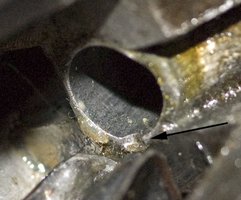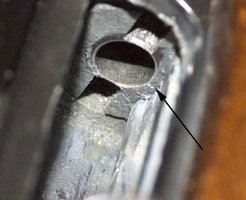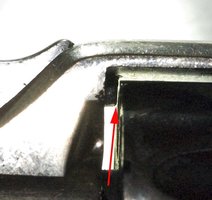I know it's a no no to dry fire a .22 semi auto but how about a revolver?
Sent from my iPhone using Tapatalk
Sent from my iPhone using Tapatalk
If you enjoy the forum please consider supporting it by signing up for a NES Membership The benefits pay for the membership many times over.
The factory pin on a 617 is different that the pin used on the centerfire guns. The groove on the side of the 617 pin is designed to stop forward movement of the pin before the tip contacts the edge of the chamber mouths. Sometimes this limited range of movement seems to inhibit the full ignition potential on rimfire ammo.
I know it's a no no to dry fire a .22 semi auto...
Why would you? Is recoil flinch a problem? Get a BB gun.
Why would you want to dry fire it anyway?
You never want to dry fire any rimfire gun (.22 & some older stuff). All you're doing is hammering the pin against the edge of the chamber.
Can I dry fire my Mark III pistol?
Yes. The Mark III has a firing pin stop that prevents the firing pin from contacting the rear of the barrel and damaging the edge of the chamber. If you are going to dry fire the pistol extensively, the stop pin and firing pin will eventually wear and contact could occur, and we recommend replacing both the firing pin and the firing pin stop from time to time. You should also monitor the contact of the firing pin with the rear of the barrel
Can I dry fire my Ruger rifle?
Yes. All Ruger rifles can be dry fired without damage, and dry firing can be useful to familiarize the owner with the firearm. However, be sure any firearm is completely unloaded before dry firing!
You never want to dry fire any rimfire gun (.22 & some older stuff). All you're doing is hammering the pin against the edge of the chamber.



Why would you want to dry fire it anyway?
There is also a danger of outright breaking the firing pin. Happened to me, years ago, before I knew better. I snapped the pin on a bolt action Stevens by dry firing.
